I. Introduction
September 2017: while the VR market is dominated by the HTC Vive and the Oculus Rift(in fact almost the only two headsets at the time), Pimax is already offering a 4k headset with a definition far superior to what was being done (1920 x 2160 per eye against 1080 x 1200 for the Vive). That’s when the Chinese company launched an ambitious Kickstarter campaign consisting of three headsets offering a 200° FOV with impressive resolutions:
- The 5k (2560×1440 per eye)
- The 8K (2560×1440 input on a 3840×2160 panel per eye)
- The 8KX (3840×2160 per eye)
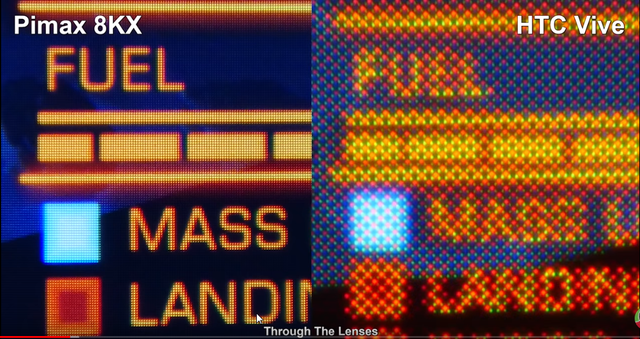
The campaign was a huge success. I was a backer of an 8K myself, before taking advantage of an offer to get the 5k+ and a voucher instead. The 8KX was supposed to come out later. Actually much later. Basically, everything was always late. But nothing surprising for a Kickstarter campaign. My 5k+ shipped in January 2019. Later I will take advantage of a Pimax offer to upgrade to the 8KX which I will receive in September 2020. Yes some backers have waited three years to receive the 8KX. All this to say that this is a case that I followed closely. And as Pimax launches the Crystal, I think it’s time to take stock.
II. Design and construction
Design
The Pimax of this generation (5K, 8K, 8KX) all use the same chassis. The latter encountered some problems on the first units, but has not been a problem since. The 8KX benefits from a Soft Touch finish which perhaps makes it even more solid. I would have preferred a slightly less angular design to reduce shock sensitivity. The color of the big “V” is not adjustable. Personally I like the style of this helmet.
Manufacturing quality
It’s hard to make a VR headset indestructible without making it an anvil. Again, once the problems of the first series were solved, these headsets turned out to be quite reliable and well finished. The Achilles heel is clearly the cable: when it starts to act up, there are pixels that turn white… However, it can be changed quite easily. On the software side too, it is rather stable, at least in the average of the market. In any case, mine always works perfectly even though I did not spare it (see the various scratches on the case).
Confort
Contrary to what one might think, the headset is not that heavy, and although wide, it is not deep so there is not so much weight in the overhang. Unlike the 8K and 5K, the 8KX benefits from a rigid strap, called SMAS for Standard Modular Audio Strap. Let’s be clear: it’s difficult (impossible?) to design a strap that fits all heads. This SMAS is better than the soft strap of the other Pimax headphones, but on the whole it is generally not that appreciated (which is not my case). On the other hand, the management of the cable is to be refined: it is planned that it passes along the left side, but the part which maintains it does not do its job very well… too bad.
In any case, the SRT Team has been doing 24 hours races with this helmet for several years now, without any problem of comfort. You can also see it in action on our french Twitch channel!
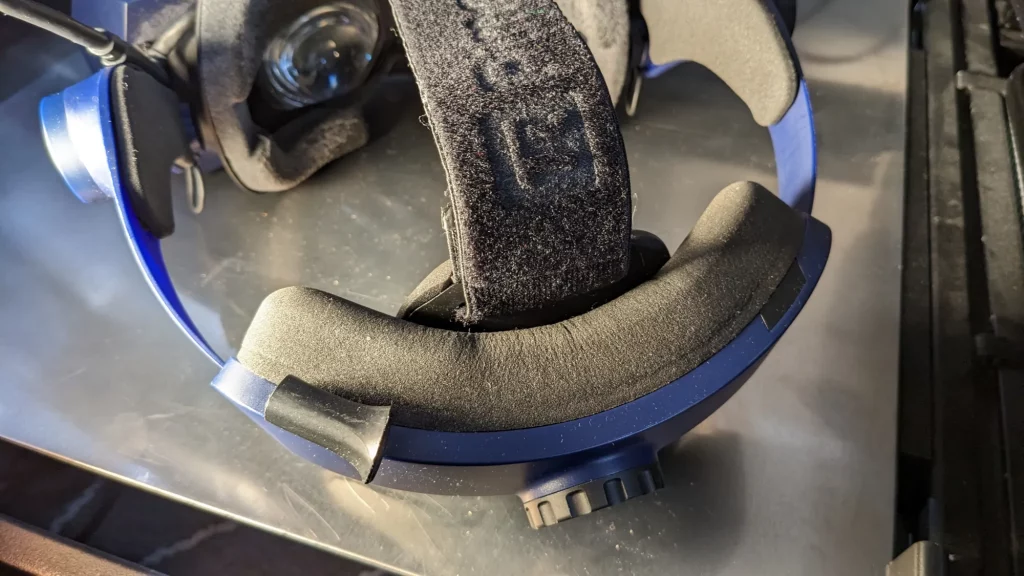
Tracking in space
The tracking in space uses the same technology as the HTC Vive and is very effective, nothing to say about it.
III. Visual performance
Image quality
I don’t plan here to propose you pictures through the lenses or advanced and abstract colorimetry tests : it’s useless… then I am not equipped… Of course the image is sharp. The sweetspot (area where the sharpness is the highest) is very good. It is now surpassed by the Crystal, but clearly, if you have the right GPU, you get the sharpness of a 4K image on a screen. On the other hand, the field of view being particularly wide, the number of pixels per degree of field of view (ppd) is not very high. That’s why headsets like the Valve Index look sharper, and are often preferred by gamers who don’t have a high-end graphics card.
Field of view (FOV)
Pimax has set the bar very high with its FOV (Field of View). Maybe too much so. Concretely, the software allows three fields of view: Small, Normal, Large. Obviously, the wider the FOV, the more graphic resources it consumes. And I don’t think anyone uses the Large, because it consumes too many resources and there are too many optical distortions to make it worthwhile. By the way, Pimax offered for a short period of time a headset called Artisan that offered a 140° FOV, which is a good compromise. Anyway, once you’ve tried it, it’s very difficult to go back.
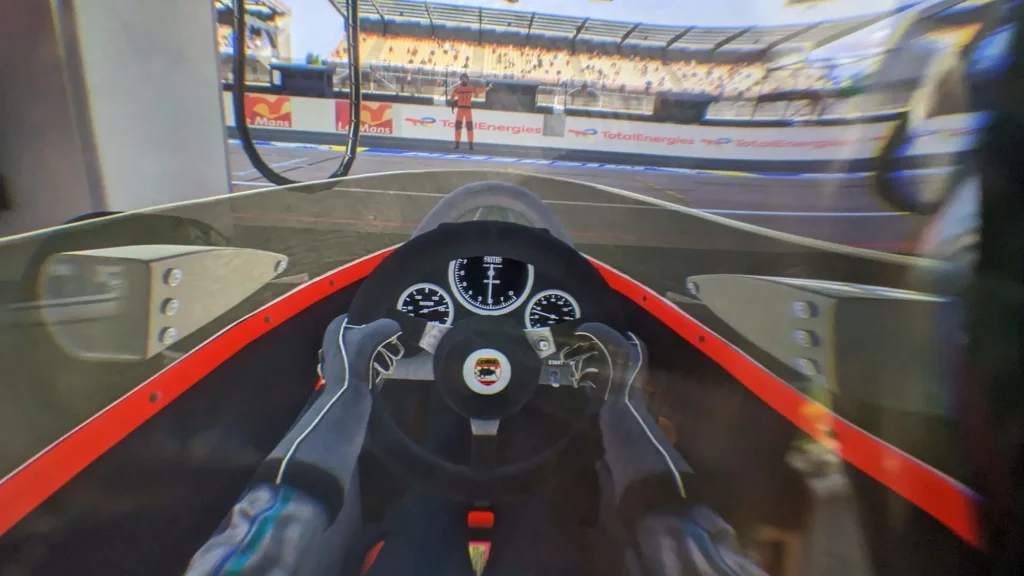
The FOV of the Pimax is comparable to what you get with a triple screen. But on this subject I will be categorical: it is not comparable at all. And even if we regularly see videos on youtube “Driver’s Eye” that look ultra-realistic, it is not! With a triple screen, you stay in 2 dimensions. Point. You can install a curved rear-projected screen of 10m diagonal, it will not change anything to the fact that you are stuck in 2D, that you see your material and not the car. VR has its drawbacks (price, comfort, practicality), but nothing can match it in terms of immersion.
Color and contrast
Again, no infrared tests, but a simple feeling: the colors and brightness of the Pimax 8Kx are correct, nothing more. The Crystal does better, and it is likely that future VR headsets will do better too.
Smoothness
The Pimax 8KX offered at its release 75Hz. This is not huge. But note that feeding two 4k tiles at 75Hz, you have to count on at least one 3080ti in sim racing! Pimax has been offering a 90Hz mode for a while now, but it’s still not stable for me. And anyway, going up to 90Hz implies important graphic sacrifices (even with a 4080). Finally, I have the feeling that even at 75Hz, the fluidity is not as satisfactory as on the 5k+ for the same refresh rate… The software offers a mode to double the frequency for an equivalent GPU load: Smart Smoothing, but it generates too many artifacts to be satisfying.
Finally, Pimax proposed a 120Hz mode in beta a while ago for some versions of the headset, but we haven’t heard from them since.
Features
In addition to presenting technical specifications defying all competition, Pimax is working hard to develop numerous software features. Among these, there is the FFR: decrease of the resolution on the sides, and the DFR: decrease of the resolution where you don’t look, thus using an eye tracking. Pimax works with Nvidia for the implementation of these solutions, and it is probably the only manufacturer that tries to make things happen at this level. Even if for the moment these functionalities are not all exploitable, as for example the tracking of the hands.
IV. Audio performance
The basic strap (SMAS) integrates small speakers, and I think that Pimax made a very good choice: the sound is obviously not of very good quality, but it is not detestable either. Moreover, it avoids using a headset that cuts us off from the world (for Beat Saber parties, it’s still appreciable). Finally, you can always unplug them and put on a headset or earphones… so really appreciable.
There is also the possibility to order the DMAS: Deluxe Modular Audio Strap. The feedbacks are not necessarily extremely praising on this product but it is necessary to understand that the good compromise was not easy to obtain between practicality and audio quality…
EDIT : obviously the SMAS strap is not proposed anymore.
V. Usability
The driver : Pitool
Many people have criticized the Pitool driver. However, if you think about it, it’s really a good driver. Let’s remember that when the first 5K and 8K headsets were released, Vive used a driver that took forever to download, and Windows headsets (WMR) almost all crashed on installation. The Pitool software weighs between 100Mb and 200Mb and installs quickly. It finally offers a rather practical interface, and especially with many more settings than the competition.

The buttons on the headset
Another positive point: three buttons are located on the top of the headset: a button to turn on the headset, and two volume buttons … there too … volume buttons, it’s silly, but when you’re in the middle of the room, and you have no idea where your keyboard is, it’s still very convenient!
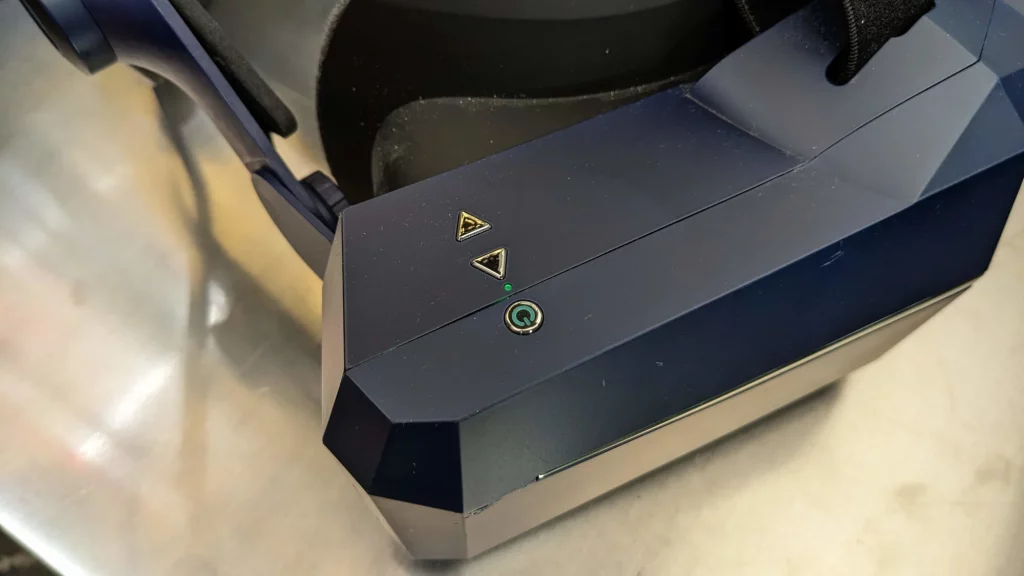
VI. Conclusion
Is it a good headset? Yes. Is it a very good headset? Let’s be honest: in 2017, signing up for a screen with two 4k panels is like pre-ordering an autonomous car from Renault that runs on solar panels, with a range of 1500km, and with 8 seats.
But Pimax did it. So yes, we can criticize a reasonable fluidity, an eye tracking that was laborious or an unreliable cable. But Pimax made the lines move, and with my 4080 I take a lot of pleasure to ride in VR with this headset. At this point, my regret is that they didn’t offer an 8KX+: better quality panels with a 120Hz refresh rate, and everyone was happy!
The manufacturer is currently releasing the Crystal with new features, before focusing on the 12k which as its name suggests will offer a resolution of 6k per eye!
Finally, a little advice: Pimax offers to buy back the 8KX if you upgrade to 12K, so if you see a good promotion, it could be interesting!
To be notified of special offers, join my social networks: Facebook, Discord.
Final review :
Final review :- Quality4/5 GoodIt's been a long journey but we are there !
- Picture quality4/5 GoodThe panels aren't the best out there but it's still one of the highest resolution available
- Smoothness3/5 NeutralIt's hard to get such a high resolution through a cable with a high refresh rate. Let's hope Pimax takes full advantage of the new Display Port standards.
- Confort4/5 GoodThe weight is well distributed but the case remains large.
- FOV (Field of View)5/5 Amazing200° is still an incredible feat!
The Good
- Crazy Resolution
- Crazy FOV
- A long term product: it will be necessary to wait for the 6xxx generation of Nvidia to make the headset run at full speed on all simus
The Bad
- Refresh rate a little bit limited
- Heavy on GPU's
- Cable management to be refined
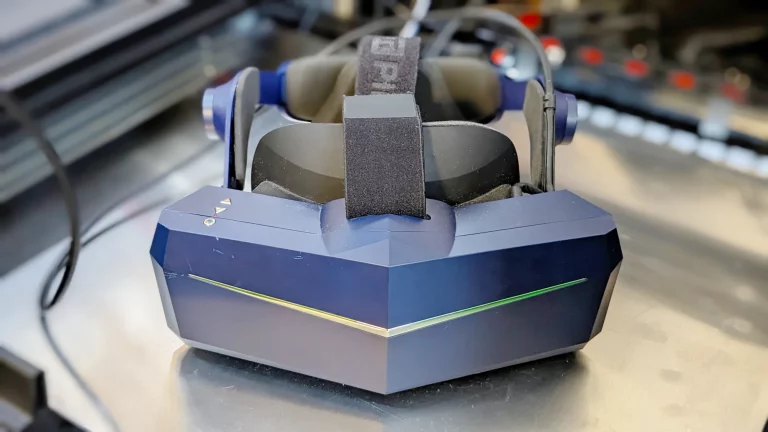
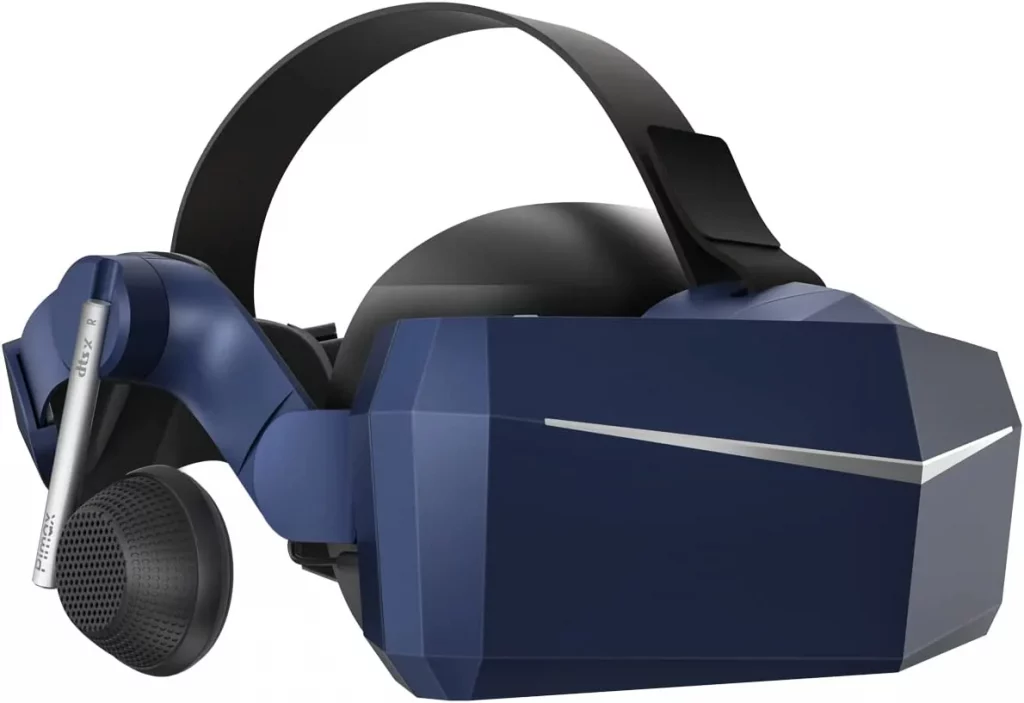
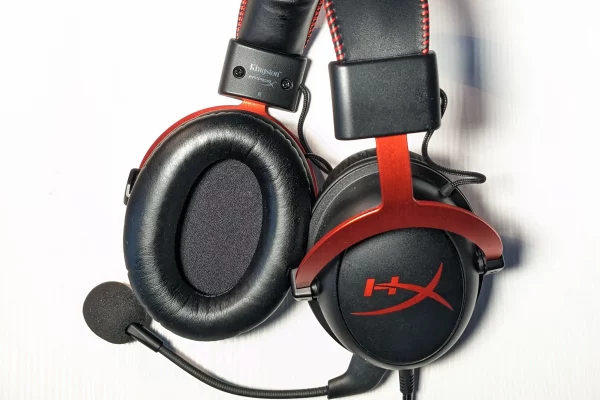
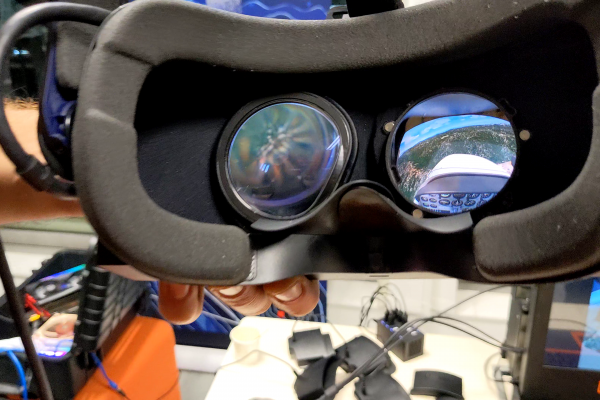
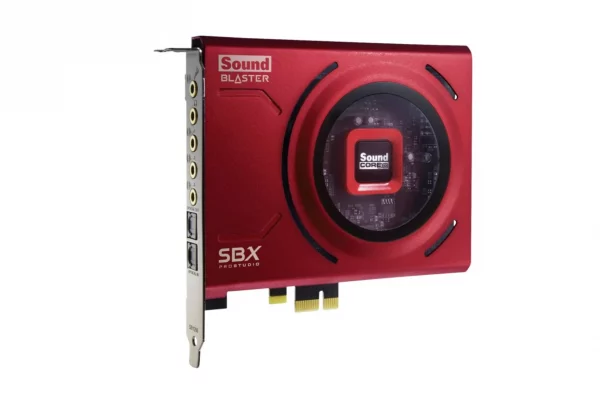
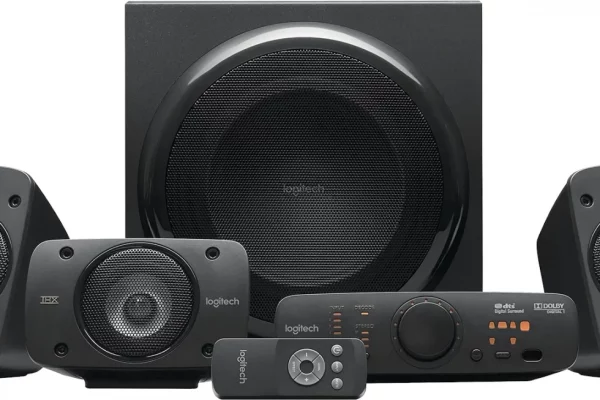
Thanks for the review. Are you using base stations?
no I’m not 🙂